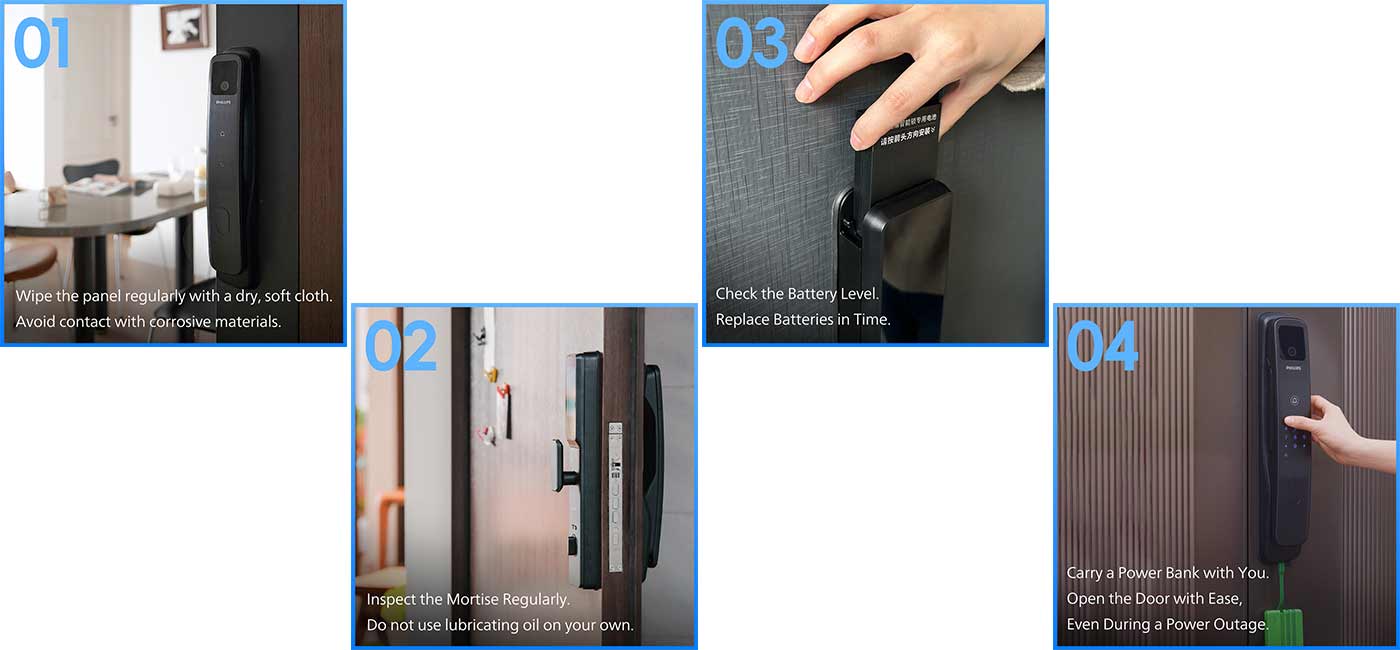As a high-frequency use, low-replacement entry-level security device, what should you pay attention to in daily use of Philips smart locks?
01. Regularly Clean the Panel
Avoid Contact with Corrosive Substances
Over time, the indoor and outdoor panels of a smart lock inevitably accumulate dirt, especially around the fingerprint sensor and camera module. Regularly clean these areas with a soft, dry cloth. Avoid using corrosive cleaning agents or abrasive materials like steel wool, as they can scratch the panel or affect the accuracy of the sensors.
02. Inspect the Lock Mortise
Do Not Use Lubricants Yourself
If the lock mortise feels jammed during use, contact the brand's after-sales service promptly. Do not spray lubricants or similar substances on your own, as this could cause short circuits or damage the lock.
Additionally, regularly check whether the latch and strike plate hole align properly and whether the gap between the door and frame is appropriate. If you notice any issues, contact after-sales support or an installer to adjust the alignment to ensure normal operation.

03. Monitor Battery Levels
Replace Batteries Correctly
Check the battery status of your smart lock regularly, especially before long trips. If the low-battery alert is triggered, replace the batteries immediately and avoid mixing old and new batteries.
For smart locks equipped with lithium batteries, remove the battery and recharge it as needed. Charging typically takes about 6 hours, and a blue light will indicate when it is fully charged.
04. Carry a Power Bank
Open the Door Even in a Power-Outage
Worried about being locked out because the smart lock ran out of power? Don’t be! Philips smart locks feature an emergency power interface. Simply connect a standard power bank to provide temporary power and unlock the door. For peace of mind, consider carrying a power bank during extended trips.
05. Additional Maintenance Tips
1. Avoid hanging heavy objects on the handle to prevent loosening and potential functional issues.
2. Check the smart lock's network connection before leaving home to ensure remote monitoring via your phone.
3. Use a dry cloth to clean the battery compartment regularly to prevent moisture buildup.
4. Keep lithium batteries away from flammable materials while charging, and disconnect the charger immediately after charging is complete.